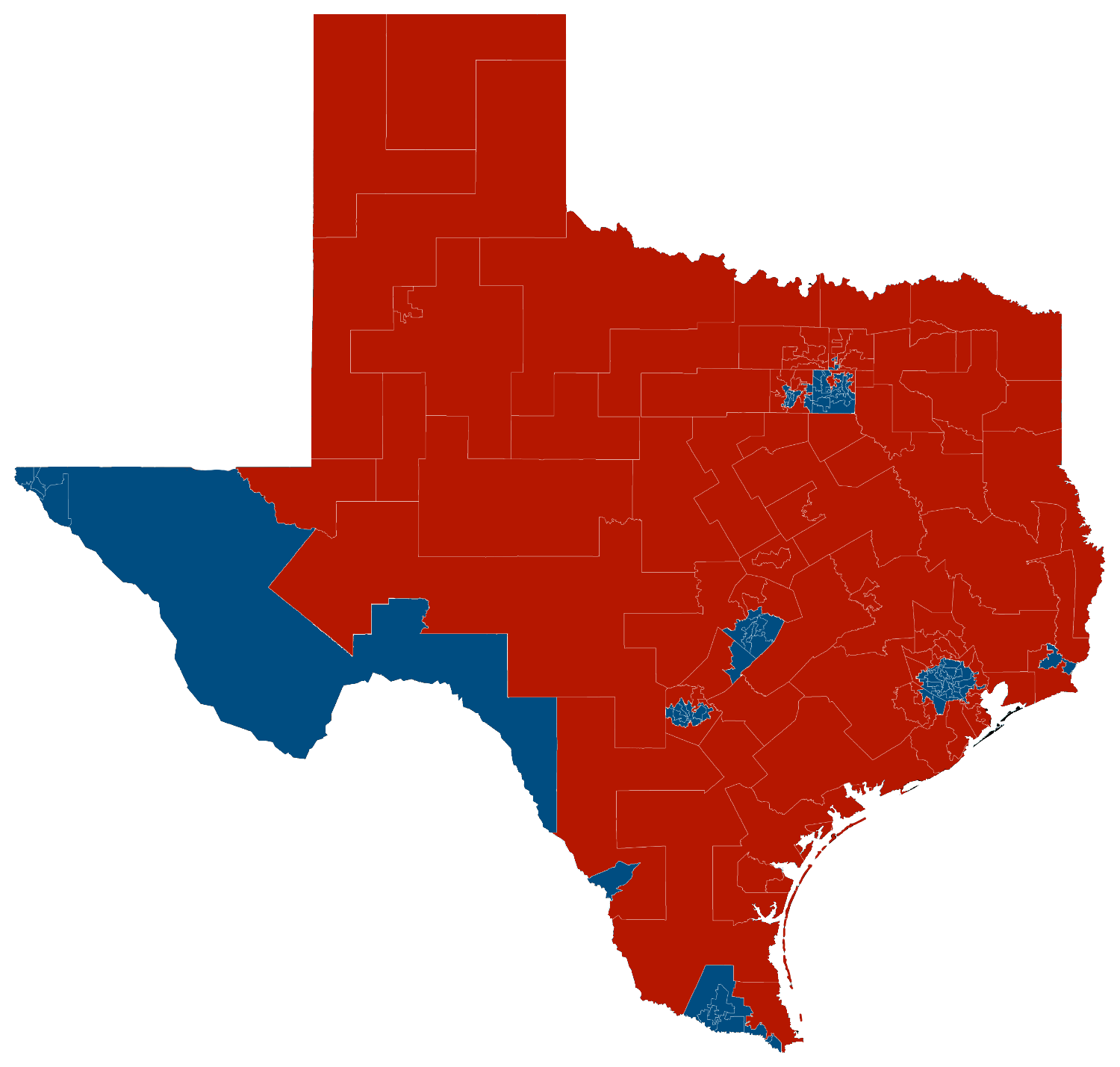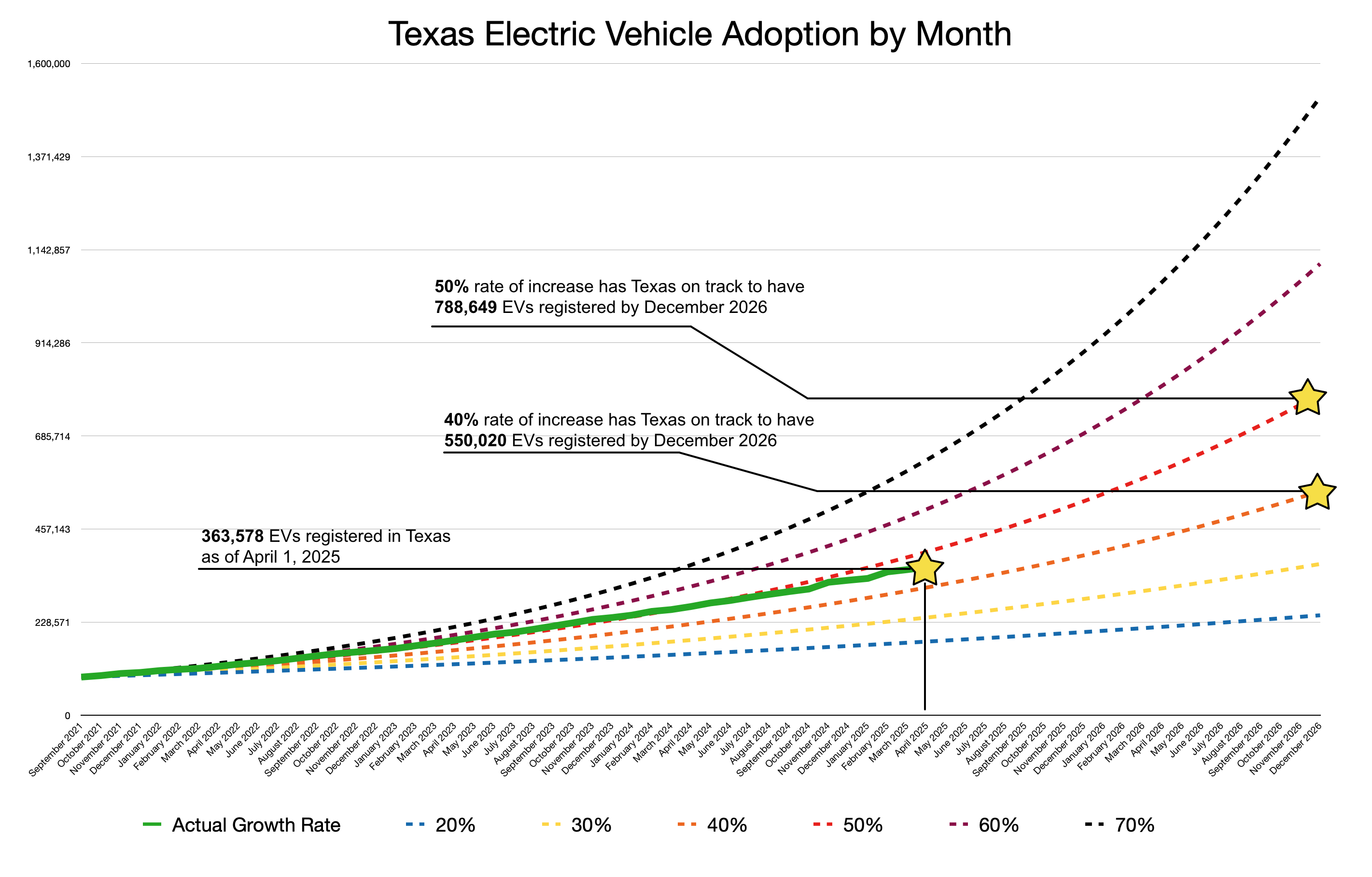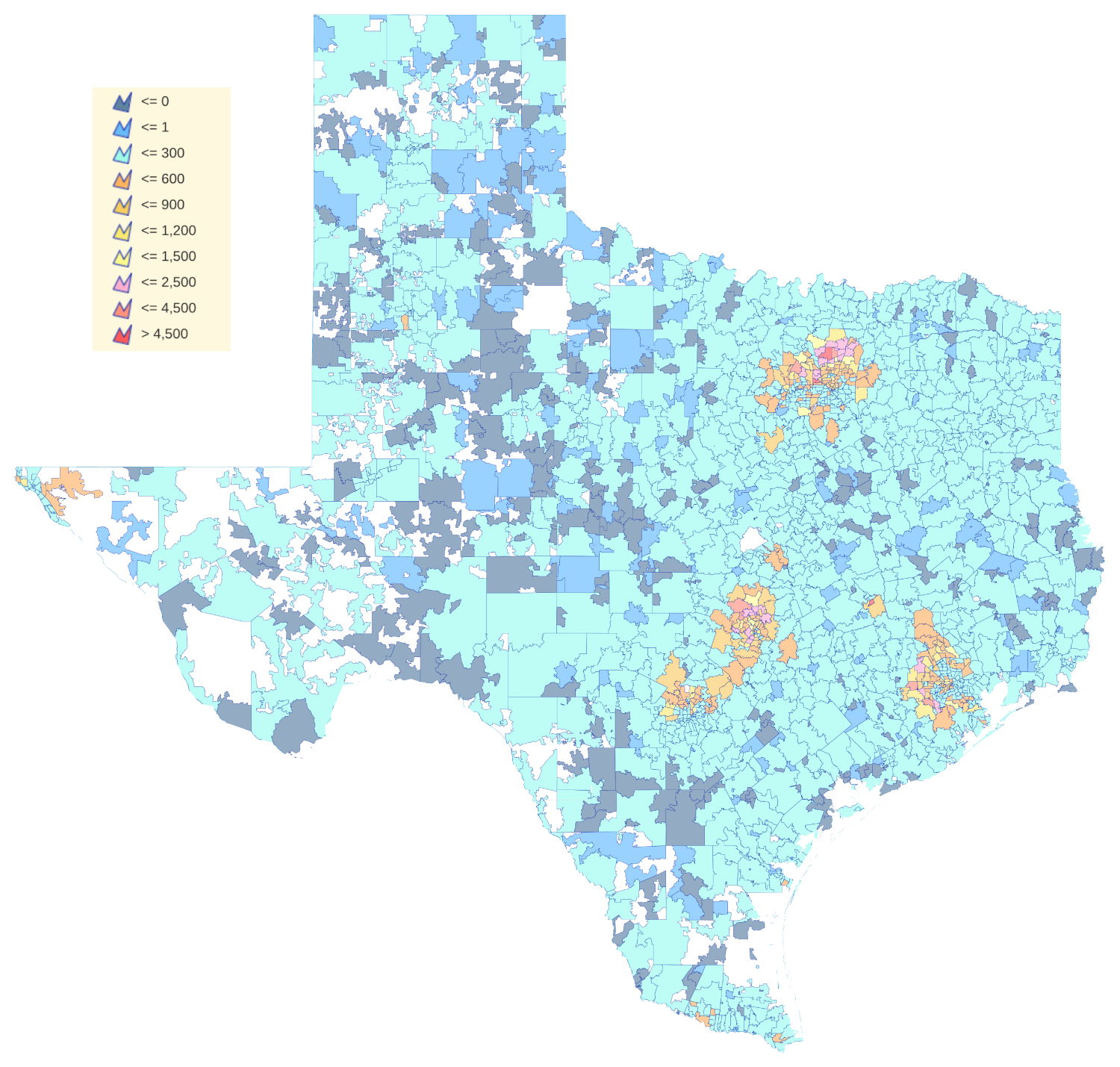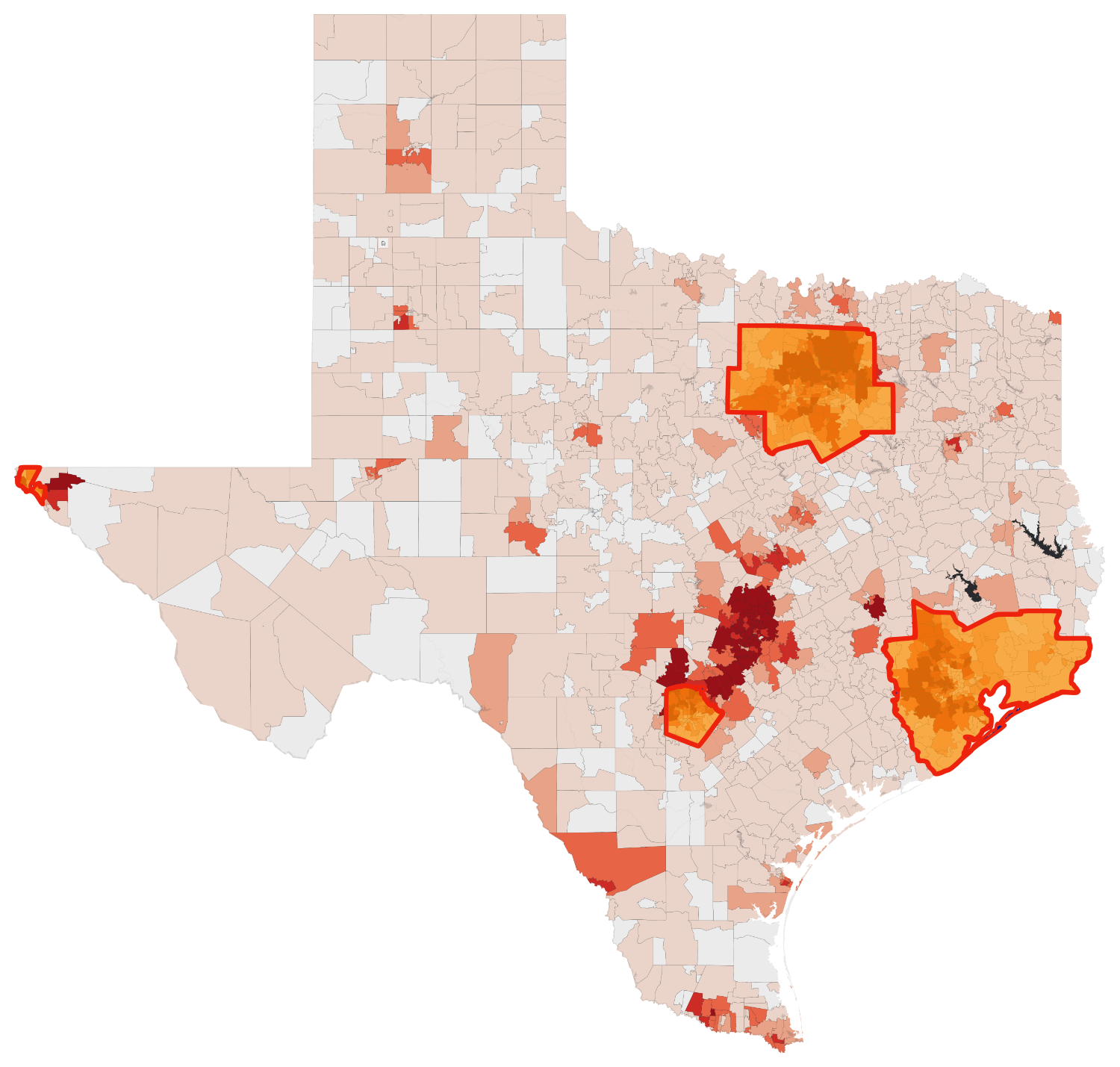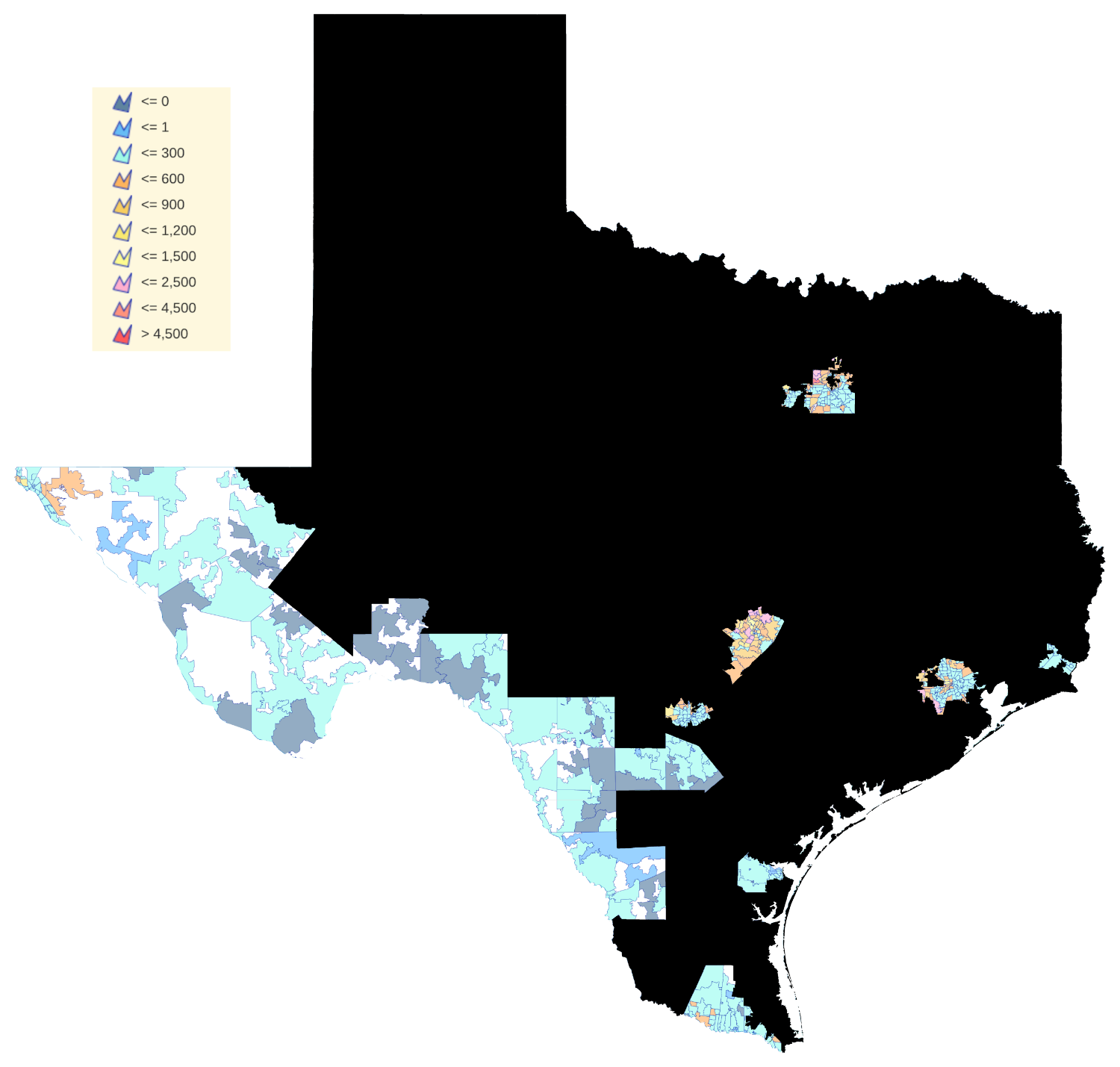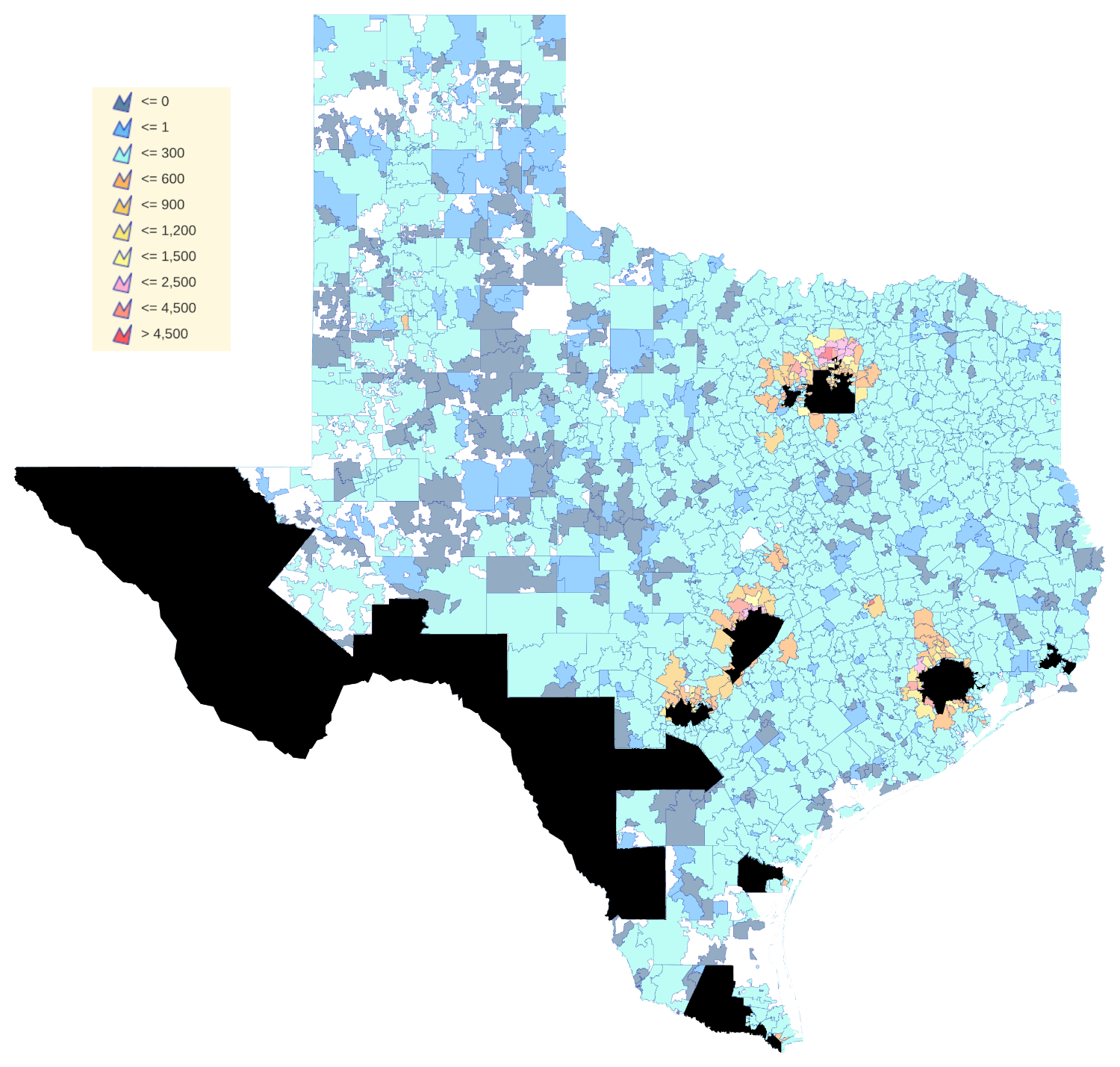Recently, I posted about how EV adoption, over time, seems to be mimicking cell phone adoption in the 1990s. Can you imagine if politicians had decided they were opposed to cell phones back then and campaigned on ending their existence in the U.S.? The world would be so much different today, than it is, for good or bad. Bloomberg and other publications have mentioned the possible problem for politicians taking such a stance. EV adoption, although weakened by high auto financing rates, continues to be strong. In Texas plug-in vehicle registrations increase year-over-year at close to 50%. The “rule of 72” shows that this growth doubles the number of EVs on the road approximately every 1.44 years. There are currently 290,716 plug-in vehicles registered in Texas. In a year and a half, there will be more than 581,000. Some areas of Texas are increasing at a rate of 70%+, year-over-year. In those areas, EVs will double in number about every 12 months!
Select your Texas House district to see your area’s adoption rate.
Don’t know who represents you? You can find that information here.
- District 1
- District 2
- District 3
- District 4
- District 5
- District 6
- District 7
- District 8
- District 9
- District 10
- District 11
- District 12
- District 13
- District 14
- District 15
- District 16
- District 17
- District 18
- District 19
- District 20
- District 21
- District 22
- District 23
- District 24
- District 25
- District 26
- District 27
- District 28
- District 29
- District 30
- District 31
- District 32
- District 33
- District 34
- District 35
- District 36
- District 37
- District 38
- District 39
- District 40
- District 41
- District 42
- District 43
- District 44
- District 45
- District 46
- District 47
- District 48
- District 49
- District 50
- District 51
- District 52
- District 53
- District 54
- District 55
- District 56
- District 57
- District 58
- District 59
- District 60
- District 61
- District 62
- District 63
- District 64
- District 65
- District 66
- District 67
- District 68
- District 69
- District 70
- District 71
- District 72
- District 73
- District 74
- District 75
- District 76
- District 77
- District 78
- District 79
- District 80
- District 81
- District 82
- District 83
- District 84
- District 85
- District 86
- District 87
- District 88
- District 89
- District 90
- District 91
- District 92
- District 93
- District 94
- District 95
- District 96
- District 97
- District 98
- District 99
- District 100
- District 101
- District 102
- District 103
- District 104
- District 105
- District 106
- District 107
- District 108
- District 109
- District 110
- District 111
- District 112
- District 113
- District 114
- District 115
- District 116
- District 117
- District 118
- District 119
- District 120
- District 121
- District 122
- District 123
- District 124
- District 125
- District 126
- District 127
- District 128
- District 129
- District 130
- District 131
- District 132
- District 133
- District 134
- District 135
- District 136
- District 137
- District 138
- District 139
- District 140
- District 141
- District 142
- District 143
- District 144
- District 145
- District 146
- District 147
- District 148
- District 149
- District 150
The image below seems to indicate that EV adoption starts and spreads out from urban areas (indicated by green blobs) where (typically) daily commutes are shorter and charging infrastructure is more common. Sort of like early cell phone adoption… One particularly interesting thing to note is that, even in very rural areas, any area of EV adoption seems to begin at areas of population density. like smaller cities and towns.
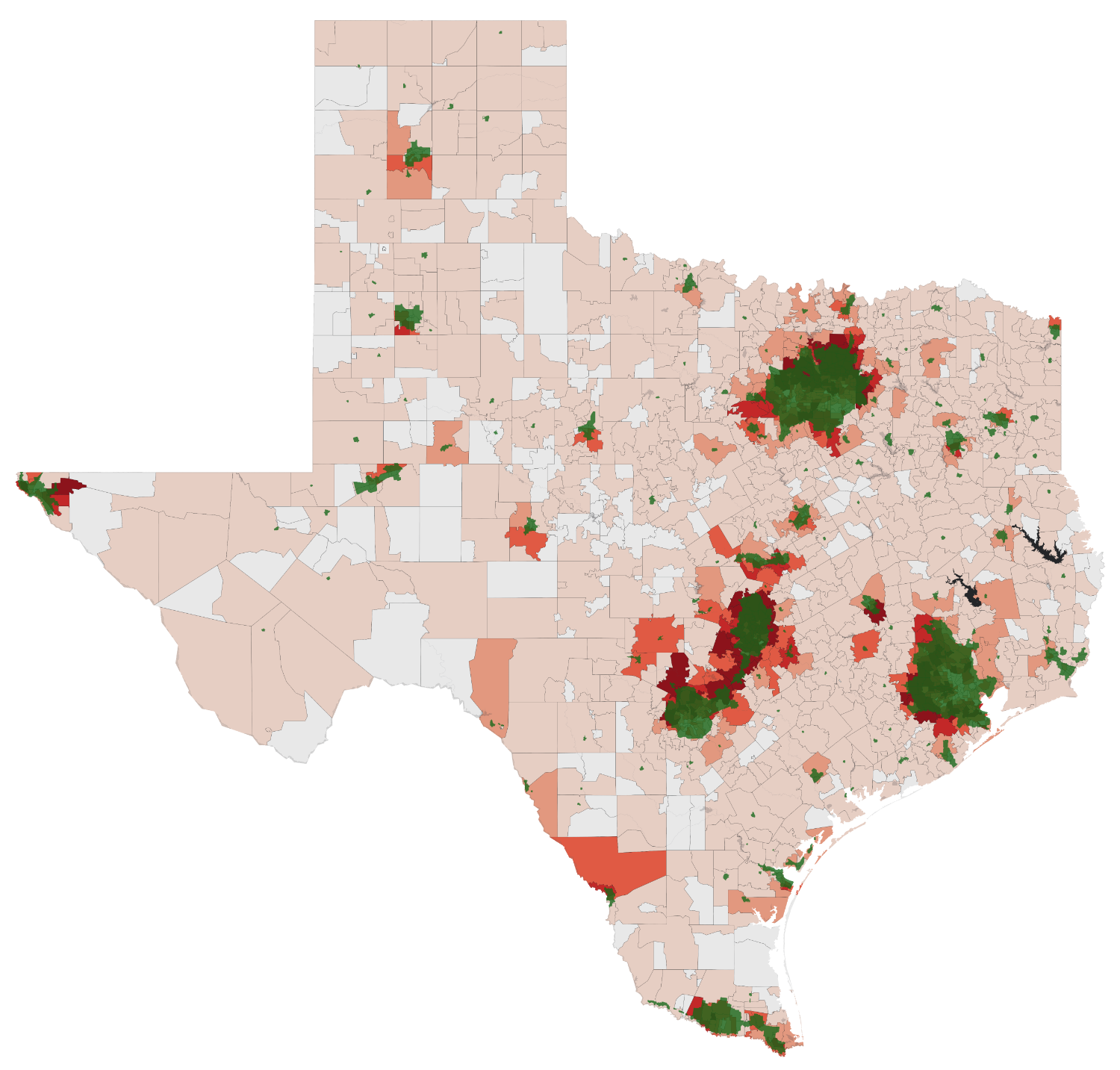
Another common myth is that drivers decide to become EV buyers because of climate change or other environmental concerns. The map below shows areas of noncompliance with EPA air quality standards. Some of these areas have been in noncompliance for decades. However, there is heavy EV adoption occurring in areas with relatively clean air, like Austin, Tyler and College Station as well as moderately heavy adoption in areas near Lubbock, Longview, Waco, Texarkana, Amarillo and more.
Electric vehicles have become a point of contention in the upcoming election (and upcoming legislative session) with a number very prominent candidates lining up against EVs. Bloomberg, Politico and other organizations have started pointing out the political risk of going against EVs, especially when they’re being adopted so quickly. In the video below, the districts of each party are blacked out, so you can easily see where the adoption was, in September 2021 and how it progresses to August 2024. Recent conversations I’ve had with EV owners at conferences, shows and standing around EV charging stations (the new water cooler…) has shown me that many EV drivers are very upset about politics in Texas affecting EV drivers negatively, including the $200 additional fee for vehicle registration that was passed in the last session. Could EVs, the jobs, the economic prosperity and the cleaner air they bring cause a problem for those opposed to them? Only time will tell, but there are more than 309,807 EV drivers in Texas and many are definitely getting upset. My role at TxETRA is to make sure the government officials that hold sway over EVs understand them, their positive impact on our state (both ecologic and financial), and that the number of EV drivers in Texas is growing. EVs are NOT partisan! To have a voice in this battle, our voices must join together. We must stay informed, especially about what’s happening in the Legislature. I highly recommend joining TxETRA. We’ll keep you informed. The cost is $25 per year and that money is used to fund our lobbying efforts.

